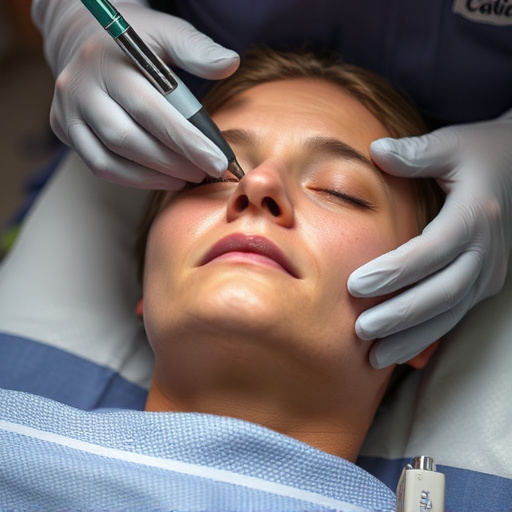Laser mole removal offers a sophisticated, non-invasive alternative to traditional surgery, utilizing concentrated light energy for targeted lesion destruction. It minimizes scarring, improves skin texture, and features faster recovery times with less pain. Compared to surgical excision for larger moles, laser treatments are safer for smaller moles and sensitive areas, though they may cause pigment changes or scarring. Surgical excision provides precise removal but carries higher infection and scar risks. The optimal mole removal service choice depends on mole characteristics, skin type, invasiveness preference, and recovery time considerations.
Considering laser or surgical options for mole removal? This guide explores advanced techniques to address your skin concerns effectively. From understanding laser mole removal, where targeted light offers precise results, to surgical approaches that physically extract moles, we delve into safe and efficient methods. We compare recovery times and highlight benefits, empowering you to choose the best mole removal service tailored to your needs.
- Understanding Laser Mole Removal Techniques
- Exploring Surgical Approaches for Mole Extraction
- Comparing Safety, Effectiveness, and Recovery Times
Understanding Laser Mole Removal Techniques

Laser mole removal techniques have evolved significantly, offering a precise and effective method for removing moles from the skin. This non-invasive procedure utilises concentrated light energy to target and destroy the pigmented lesions, leaving minimal scarring. Unlike traditional surgical excision, laser treatments can be a more suitable option for individuals seeking a quicker recovery and less visible marks on their skin.
The process involves advanced laser technology that penetrates the skin, targeting the melanin in the mole. This targeted approach ensures the removal of the unwanted growth while preserving the surrounding healthy tissue. Post-treatment, the body’s natural healing process takes over, resulting in improved skin texture and a reduced risk of scar formation compared to surgical methods. Additionally, laser mole removal is often associated with faster recovery times and less pain, making it an attractive option for those considering a mole removal service.
Exploring Surgical Approaches for Mole Extraction

When considering a mole removal service, exploring surgical approaches offers several effective options. Traditional methods involve excision, where a doctor cuts out the mole and stitches the skin closed. This is suitable for most moles but requires careful healing and may leave scars. Alternatively, shaving or scraping is faster but less precise, often used for smaller, shallow moles.
For deeper or larger moles, surgical options like chemical peels or laser treatments can be more appropriate. Chemical peels use acid to lift away the top layers of skin, gradually reducing the mole’s appearance over time. Laser treatments, meanwhile, target melanin in the mole with precise light beams, breaking it down for the body to absorb. Such advanced medical spa services, often combined with anti-aging treatments, offer promising outcomes for mole removal while addressing potential signs of aging.
Comparing Safety, Effectiveness, and Recovery Times

When comparing laser versus surgical options for mole removal services, safety, effectiveness, and recovery times are key considerations. Laser treatments, such as intense pulsed light (IPL) or targeted laser ablation, offer a non-invasive approach with minimal downtime. They’re particularly effective for smaller moles and those in sensitive areas. However, laser procedures may not be suitable for all skin types and can sometimes result in pigment changes or scarring if not performed correctly.
Surgical excision, while slightly more invasive, provides the most precise removal method. It’s recommended for larger or irregular-shaped moles to ensure complete elimination. Surgical options generally offer faster recovery times compared to lasers, with minimal scarring. Yet, they carry a higher risk of infection and may leave visible scars. Choosing between these methods depends on factors like mole size, shape, skin type, and patient preference for invasiveness and downtime during the pursuit of ideal mole removal service and aesthetic treatments.
When considering a mole removal service, whether through laser or surgical techniques, it’s crucial to weigh the safety, effectiveness, and recovery times of each approach. Both methods offer efficient solutions, but lasers may be preferable for smaller moles and sensitive areas due to minimal invasiveness and faster recovery. Surgery could be a better option for larger or complex moles, ensuring complete removal. Ultimately, consulting with a dermatologist will help determine the most suitable mole removal service for your specific needs.














